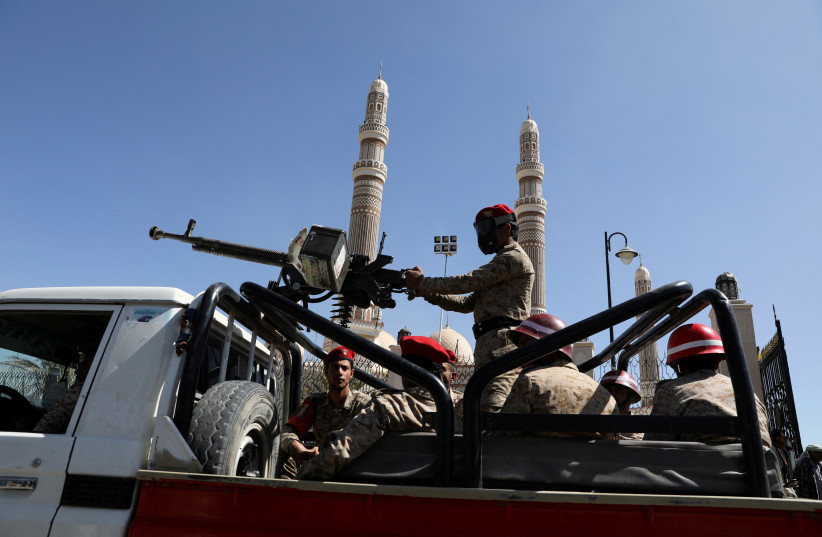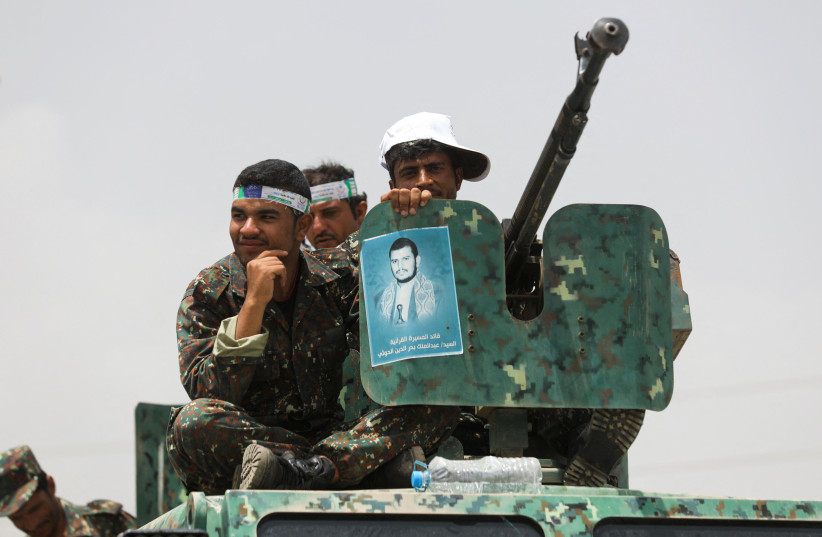A senior Houthi official warned that the Islamic political and armed movement continues to threaten Saudi Arabia and the UAE and that it can reach “far beyond” those countries, a hint that it is planning attacks on US forces in the region and Israel.
Mohammed al-Atifi, who styles himself as the group's major-general and minister of defense, recently made the comments, which were repeated via the pro-Iran Al-Mayadeen channel this week.
The comments, which come after a ceasefire expired between the Iran-backed Houthis and the Saudi-backed government of Yemen. Were also published at the Saba news outlet in Yemen.
The Houthis said that they will not hesitate to bomb “sensitive targets.” This could refer to oil installations. In the past Iran targeted Saudi Arabia’s Abqaiq oil field. They have also targeted the UAE, which is acquiring more air defenses, including America's THAAD system.

Reuters also reported in September that the Emirates is seeking to acquire the Spyder system, made by Israel’s Rafael Advanced Defense Systems. Saudi Arabia is acquiring more air defense missiles for the Patriot system and the US approved the sale of the NASAMS air defense system for Kuwait yesterday. Meanwhile, Israel is moving forward with laser air defenses for its Iron Dome system.
It is in this context that Yemen continues its threats to the region. Atifi said the Houthis will make "the screaming and wailing of the aggressors reach the greatest extent… there are no redlines or obstacles that will stand in the way of the sway of our missiles and drones by land, sea and air."
In the past, Iran has moved Shahed 136 drones to Yemen, according to reports in 2021. These are the same model of kamikaze drone that Russia is using against Ukraine.
Now the Houthis openly say they will not only target areas in the “depths of Saudi Arabia and the UAE, and their vital military and economic facilities, but far beyond that." The group says it has “strategic capabilities” which are clearly a major threat to the region. The militant group warned that countries in the region have “sought the spread of foreign military bases near oil and gas sources, and sea and air ports in the occupied Yemeni governorates to loot and drain the people’s wealth.”
This appears to be a comment aimed at the US and Israel, including recent US-backed naval exercises in the Red Sea. "Western and Zionist threats in Yemen's territorial waters are a blatant military intervention," the official said. "The Republic of Yemen, whose address is the capital Sana'a and the legitimacy of the Yemeni people, will confront these threats forcefully in accordance with the contents and texts of recognized international laws."
The Houthis' range of motion
The Houthis now say they can reach the areas of Bab al-Mandab and into the Gulf of Oman and to Socotra Island. Last July, Iran used a drone to kill two members of the crew of a commercial tanker in the gulf. Iran has often spread conspiracy theories about Socotra Island, which is off the coast of Yemen.
The article at Al-Mayadeen quoted other Houthis officials as saying the country has “planes” and that the movement now has “naval missiles.” These “will have an effective role in resolving the battle in the event that the siege is not lifted," the group says.

The “siege” is meant to refer to the fact that Saudi Arabia and others are fighting the Houthis by backing the Yemen government. Iran arms the Houthis and backs them through smuggling operations by sea. The Houthis upped their rhetoric even more in this article, claiming that investors should be wary of “investing in the UAE and Saudi Arabia [as they are] fraught with risks.”
This sounds like a mafia-style threat, asserting basically that “it would be a shame if something happens; you better pay protection.” In this sense “protection” is the Houthi demand for concessions in the wake of the ceasefire expiring. Many groups have warned that millions in Yemen are at risk if fighting resumes, but the Houthis have recently displayed numerous drones and other weapons and appear prepared to start a new offensive.
The Houthi threats come as Israel-Lebanon tensions are also increasings and as Iran has launched missiles at the Kurdistan region of Iraq.
